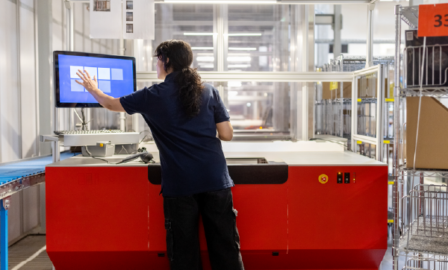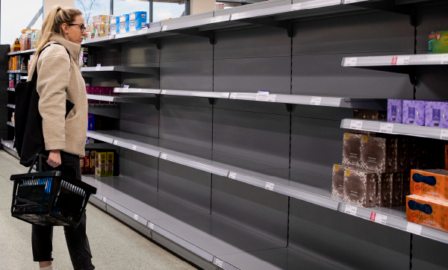Six Themes from the 2017 Kinexions Conference
The 2017 Kinexions Conference was nothing short of revolutionary. Beyond all the hype about a supply chain revolution, there were six themes that stood out as a key for Kinaxis users.
As a recent attendee of the 2017 Kinexions Conference hosted by Kinaxis, I was excited to hear the key themes for the industry and what they mean for our clients. The focus of the conference revolved around how to “Revolutionize Supply Chain Planning”. While Mark Talens from Merck, commented that it is more like an evolution than a revolution, there was still much promise of future technology and world-class benefits. Beyond the “revolution” hype, there were a few key elements discussed that stood out:
Concurrent planning brought to you only by Kinaxis
While Kinaxis RapidResponse has many things going for it, the key software differentiation is the concurrent planning ability. Kinaxis touts their software as the “world’s only concurrent supply chain planning solution”. And many of their customers agree – over 44% of Kinaxis customers say they chose Kinaxis based on its new and differentiated capabilities. Based on the challenges we’ve seen our clients go through, the ability to bridge the gap between internal and external functional and geographical silos and work on a connected single source of data will be a huge win for Kinaxis RapidResponse customers.
Life sciences becomes second most prominent industry using Kinaxis (behind High-Tech)
Given our deep expertise and years of work within the life sciences industry space, we have witnessed the additional complications that make their planning process unique. Beyond government and industry regulations, life sciences companies have global scale, complex batching processes, and a frequent use of rhythm wheels that add tremendous complexity to their supply chain orchestration. Kinaxis RapidResponse’s ability to mitigate these unique industry challenges gives it a substantial advantage over other advanced supply chain planning systems. Having set the example for serialization practices, we may see something similar with concurrent planning in the life sciences field through Kinaxis RapidResponse.
Lots of discussions around integration of Kinaxis and your core ERP
The best features of Kinaxis cannot succeed in a vacuum. As we frequently discuss with our clients, processes and technology have to work together. New technology has to integrate with current landscape. Trying to implement systems that don’t integrate with current process and technology is a setup for low adoption rate and poor functionality. Whether it’s SAP or others, the ability to integrate Kinaxis with your core ERP stood out as a key enabler for a successful Kinaxis journey. In our experience with systems implementations, we pay close attention to integration nodes between the core system of record, in many cases SAP, and a best of breed for advanced supply planning such as Kinaxis. It’s the only way to fully leverage the system capabilities. They just can’t work in isolation.
Data at the center of any successful implementation
The focus on good data is not specific to Kinaxis. The conference this year framed the goal to be data that is “aged and not staged”. In other words, the integrity of the data being used should not be in question. As Irene Lewis explains, “Data integrity is the assurance that data records are accurate, complete, consistent, intact and maintained within their original context, including their relationship to other data records.” Many current and promised features of Kinaxis are based on the prerequisite of a culture of data integrity – yet another reason integration to the system of record is so important.
Big push by Kinaxis on collaboration to cut down on planning cycle times
Kinaxis has always marketed cycle time improvements as a benefit of RapidResponse. But at this year’s Kinexions conference, they revealed the “how” behind the promise: cross-functional collaboration. The ability to collaborate inside the organization based on a single plan was sold as a main way to cut cycle times. Since so much efficiency is lost throwing items over the fence to the next silo, concurrent planning promises big results. It only gets augmented with features to enable collaboration across business partners.
Future outlook into pilots for AI, IoT, and machine learning
We’ve seen so much disruption in the supply chain field and that’s not slowing down anytime soon. Kinaxis has positioned themselves to stay ahead of the game by helping to support artificial intelligence, most specifically machine learning, as well as the internet of things. While these technologies are revolutionary, they will soon be expected by organizational leadership and consumers alike to be an integral part of the supply chain function. Our clients are eager to launch focused pilots, as shown by a few companies at the end of the conference who disclosed initial efforts already underway to apply these technologies in specific use cases.
The 2017 Kinexions Conference covered topics as flashy as artificial intelligence and as routine as data hygiene. The customers in attendance were just as diverse as the topics covered, including representation from pharma, food and beverage, telecom, and agriculture to name a few. While some customers were already jumping on board with the groundbreaking pilots, others are still trying to figure out how to implement and integrate. As with most supply chain organizations, the “revolution” promised by Kinaxis RapidResponse is indeed a journey, which can only be taken one step at a time.
If you’re ready to take your next step, contact one of our experts to brainstorm your next best step.
Subscribe to Clarkston's Insights
Contributions by Sean Wheatley.



